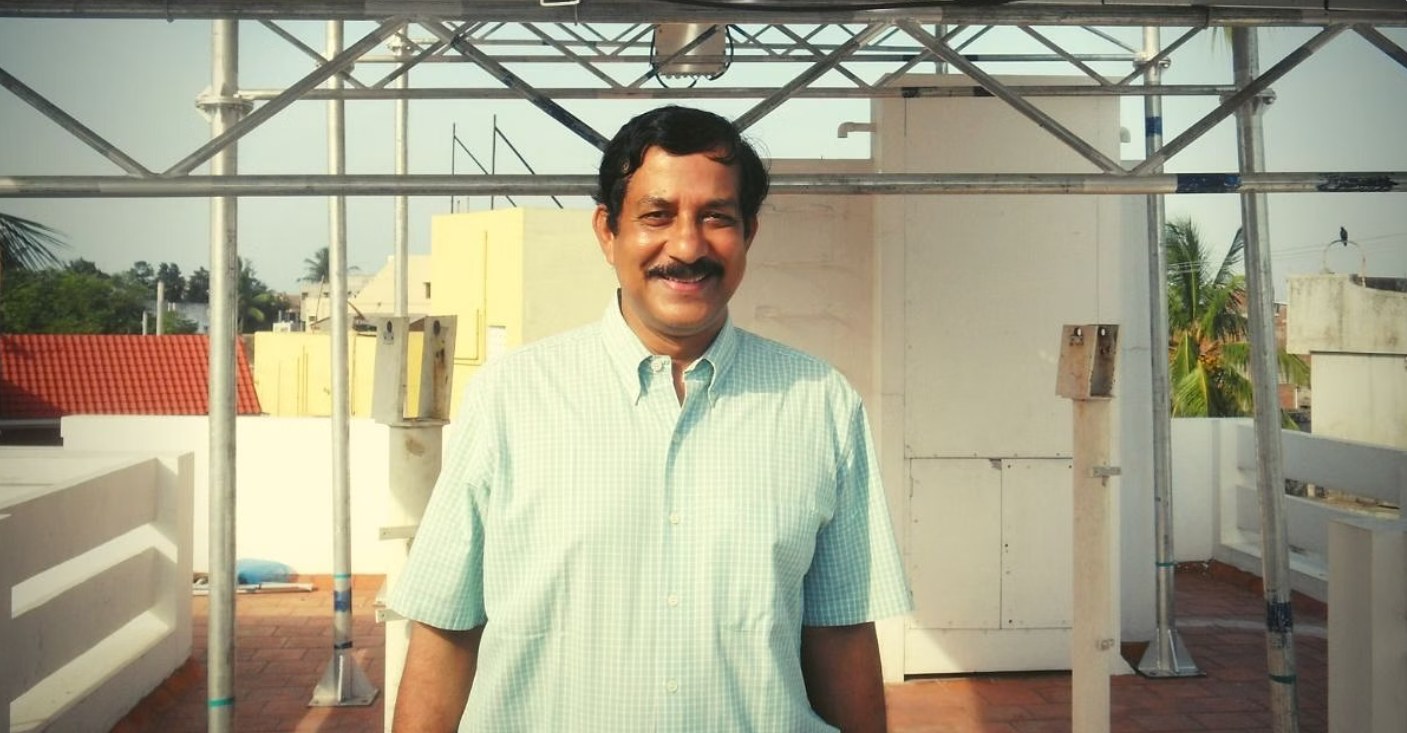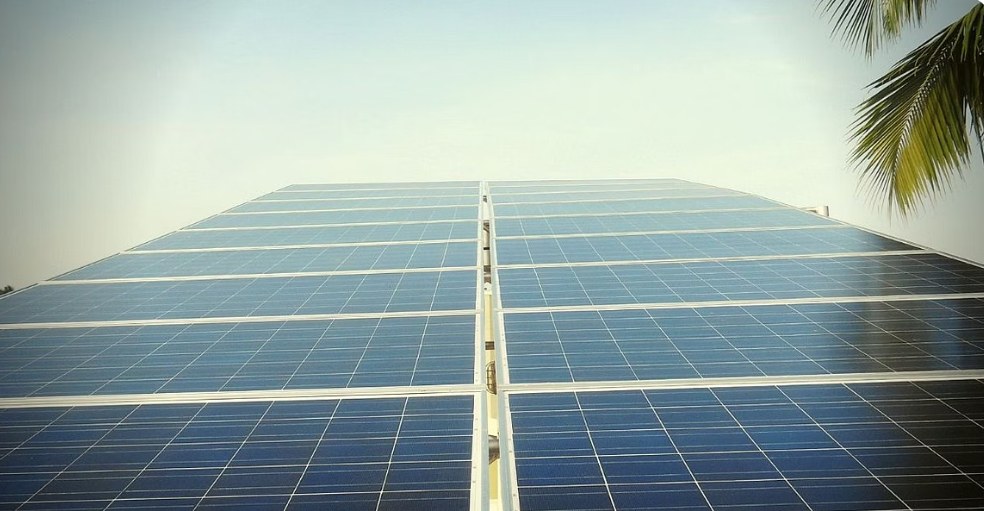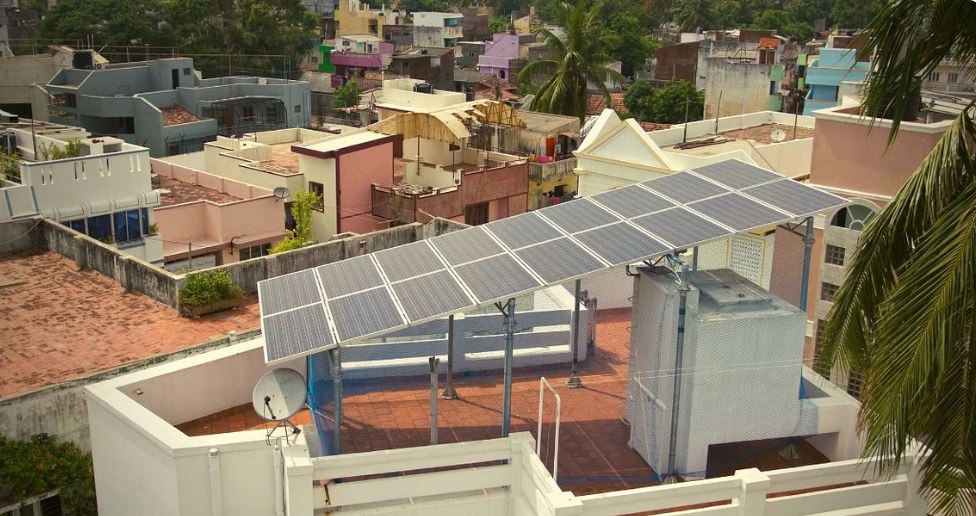‘I Power My Neighbour’s Homes Too’: This Sustainable House Runs at Zero Electricity Cost
Puducherry-based Dr Brahmanand and Hardie Mohanty built a fully solar-powered house, complete with energy-efficient appliances, to reduce their carbon footprint and live a sustainable lifestyle.

This article has been sponsored by Wingify Earth.
In 2001, Dr Brahmanand Mohanty and Hardie Mohanty set out to build a fully solar-powered house in Puducherry. They wanted to show how urban families could adopt sustainable lifestyles, and all this even before ‘sustainability’ became an attractive prospect.
“People would laugh at me for installing a solar power system in my house because back then, electricity was comparatively cheaper. They would see this as unnecessary, but I looked at the bigger picture. Not the money I spent then, but the energy I would save in the long run. The entire house has been built on this principle,” Brahmanand, a visiting faculty at the Asian Institute of Technology, Bangkok, tells The Better India.

The making of a solar-powered home
The two-storied green-powered house, built on 1,400 sq ft, has three bedrooms and one living area. The exterior design, interiors, and home essentials were all planned consciously to reduce carbon footprint.
The house was designed to provide adequate sun protection while allowing an abundance of daylight and ventilation. The living room and other spaces do not have air conditioners, but fans and natural air keep them comfortable.
Initially, the family installed an off-grid solar power system that generated 4.8 kWh of electricity per day, meeting the essential needs of the house. It began as an exercise to test how far off-grid solar power could meet the needs of an urban family of seven members.

“But, installing solar panels without being conscious about the appliances that use the generated electricity, is an expensive and short-lived path to sustainability. We did not want to follow that. So, we decided to buy only energy-efficient appliances,” says the energy expert.
He adds that in 2001, people knew little about energy-efficient products. So it was difficult to find them in the Indian market due to a lack of demand. “I remember approaching company heads to convince them to provide the same in small numbers, as they were mostly used for industrial purposes. It was expensive at the time, but worth it in the long run,” he shares.
Brahmanand shares that while a regular urban household consumes around 300-600 units of electricity per month in India, their electricity bill is zero. They only have to pay the charges for the metre as the solar panels generate electricity even on cloudy days.

Generating more electricity than needed
“In the off-grid system, a battery usually delivers around 70 percent of the electricity it receives, with the remaining amount being lost during the conversions involved in charging and discharging. We were comfortably managing with a 900-Watt off-grid solar power system with batteries that could store 4.8 kWh of electricity,” explains Brahmanand.
However, after four to five years, he says that the capacity of the batteries started reducing. So they decided to try a grid-interactive rooftop solar system.
When the Jawaharlal Nehru National Solar Mission was launched in 2010, many state governments promoted [solar] Photovoltaic Rooftop Programmes. He explains that the aim was to deploy 20,000 MW of grid-connected solar power by 2022.
“Not much was being done in this part of the country. And so, I had to fight with regulatory authorities to allow me to set it up as an Independent Power Producer. Luckily, they did, and with the help of officials in the Power Grid Corporation, I installed a bi-directional meter in my house.”

By installing the bi-directional system, Brahmanand could now use the excess electricity he generated by flowing it back into the grid. He managed to save about 30 percent of the generated electricity.
“As a result, my solar system was not only powering my house, but also a few houses in the neighbourhood!” says the professor. If you found our stories insightful, informative, or even just enjoyable, we invite you to consider making a voluntary payment to support the work we do at The Better India. Your contribution helps us continue producing quality content that educates, inspires, and drives positive change. Choose one of the payment options below for your contribution- By paying for the stories you value, you directly contribute to sustaining our efforts focused on making a difference in the world. Together, let’s ensure that impactful stories continue to be told and shared, enriching lives and communities alike. Thank you for your support. Here are some frequently asked questions you might find helpful to know why you are contributing?

Having dedicated so much time and effort to this holistic journey, Brahmanand shares, “Today, the ways to adopt a healthy, eco-friendly lifestyle are endless. Looking back and comparing, I see no reason why all urban households cannot be energy efficient. It is an investment with a solid payback for your pocket, environment, and future!”
Edited by Divya Sethu; All images courtesy: Dr Brahmanand Mohanty
This story made me
-
97
-
121
-
89
-
167












